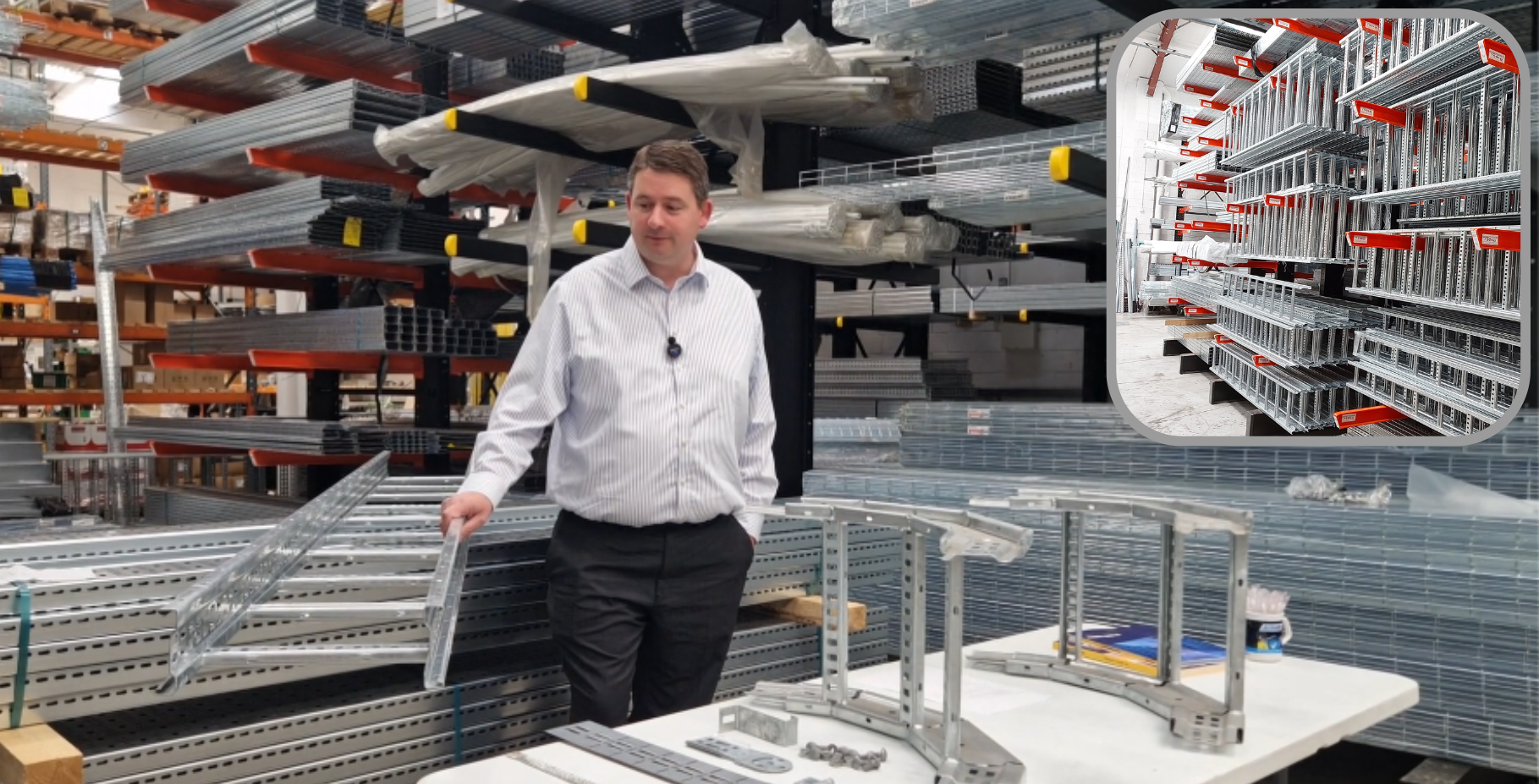Product Training: Unitrunk Cable Ladder
Ep.2 – Weekly product training, this week with Terry Harmer.
Medium Duty Unitrunk Cable Ladder is for running heavy cables, cable bundles and pipework. Ladder is ideal for installs where there are long spans between supports because of its heavy-duty manufacture. It has 300mm spacing between the rungs, so the cables can enter and exit at any point along the length. This also provides airflow which prevents the overheating of cables.
Ladder is available in both pre-galve and HDG so it can be used in both internal and external applications. We have supplied this product for installation in factories, warehouses, car parks and supermarkets, just to name a few.
Benefits of Unitrunk Cable Ladder
There are many benefits of Unitrunk Ladder, the first one being in the side wall. It has an I-Beam profile which is much stronger than the more standard C-Section profile supplied by most other major brands. The side wall is 110mm deep in comparison to other brands which are only 100mm deep, so this gives you an extra 10mm of depth. Secondly, the rungs on the bottom of the ladder alternate which is another strength over Legrand as they have all the rungs facing downwards. The alternate rungs provide much more flexibility in how you use the Ladder and what you can fix to it.
On the side wall, the holes are in the centre of the wall which again adds strength. Most of the other major brands have holes on the top or the bottom of the side wall. This can make it a bit weaker where the bottom rungs are attached. The Unitrunk ladder also has a pre-drilled hole on the side wall where you can attach the earth link.
Sizing and Accessories
This product comes in a variety of sizes from 150mm to 900mm wide, they are all available in HDG and Pre-galve. All the accessories come with an inbuilt coupler which slot into the tray. Because of the I-Beam sidewall, you end up with a stronger joint and less movement than other brands. The accessories fix to the ladder with nuts and bolts. The bolts have a square shank so they slot into the holes. This means less movement and less likelihood of it loosening.
The Vertical Adjustable Coupler is brilliant for creating your own angle which you wouldn’t be able to get with the standard risers. The Long Adjustable Couplers can double up as a reducer as it has the perforations down the length. The External Flange Clamp sits on the edge of the ladder and can be bolted into a piece of channel which would hold the Ladder down on a trapeze. Finally, we have the Hold Down Clamps, which slot over the top of the side wall. They can be bolted into channel or, onto a wall for a vertical installation.
Suspending and Fixing Cable Ladder
One of the most common ways to suspend Unitrunk cable ladder is to create a trapeze using drop rods that support a piece of channel. The ladder is then placed onto the channel and can be fixed in place with one of the flange clamps mentioned above. Some contractors also use H-frames for rooftop installations or cantilever arms for running parallel to a wall.
To identify whether a ladder bend is internal or external, see the image below.














